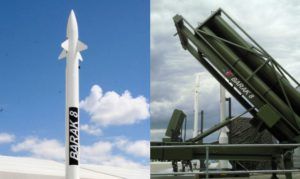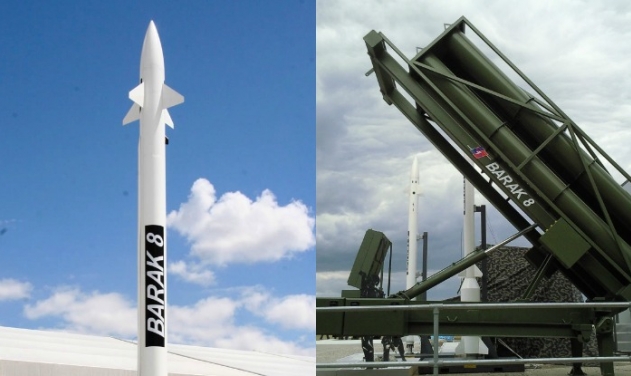
Barak 8 additionally called LR-SAM or MR-SAM is associate Indo-Israeli SAM (SAM), designed to defend against any sort of mobile threat as well as craft, helicopters, anti-ship missiles, and UAVs also as trajectory missiles, cruise missiles, and combat jets. Each maritime and land-based variants of the system exist.
Barak 8 was conjointly developed by Israel region Industries (IAI), India’s Defence analysis & Development Organisation (DRDO), Israel’s Administration for the event of Weapons and Technological Infrastructure, Elta Systems, Rafael, and different corporations. Bharat Dynamics Limited (BDL) produces the missiles.
Barak 8 is loosely supported by the first Barak 1 missile and is anticipated to feature a lot of advanced seekers, aboard various extensions which will move it nearer to medium range service systems just like the RIM-162 ESSM or maybe the SM-2 Standard. Israel with success tested the improved Barak II missile on 30 July 2009. The radar system provides 360-degree coverage and also the missiles will take down an incoming missile as shut as five hundred meters off from the ship. Every Barak system (missile instrumentality, radar, computers, and installation) prices regarding $24 million. In Nov 2009 Israel signed a $1.1 billion contract to provide an associate upgraded plan of action Barak 8 air defense system to Bharat. In May 2017, Bharat placed associate order of $630 million for four ships of the Indian Navy. In Sep 2018, MDL and GRSE awarded Bharat Electronics Limited with a $1.28 billion contract to provide seven Barak-8 air defense systems for Project 17A-class frigates. In Oct 2018, Bharat Electronics Limited signed a $777 million contend with Israel Aerospace Industries to assist fulfill the Barak-8 order.
The Barak 8 incorporates a length of regarding 4.500 meters, a diameter of 0.225 meters at the missile body, and 0.54 meters at the booster stage, a distance of 0.940 meters, and weighs 275KG as well as a 60KG warhead that detonates at proximity. The missile has the most speed of Mark 2 with a maximum operational range of 70 km, which was later increased to a hundred km. Barak 8 options a twin pulse rocket motor also as Thrust vector control, and possesses high degrees of maneuverability at target interception range. A second motor is unemployed throughout the terminal part, at that stage the active radiolocation seeker is activated to place onto the enemy track. Barak 8 has been designed to counter a good form of air-borne threats, such as anti-ship missiles, aircraft, UAVs drones, and supersonic missiles. When coupled with a modern air-defense system and multi-function surveillance track and guidance radars, (such as the EL/M-2248 MF-STAR AESA on board the Kolkata-class destroyers) Barak 8 permits the potential to act at the same time interact with multiple targets throughout saturation attacks.
Israel Aerospace Industries describe Barak 8 as “an advanced, long-range missile defense and defense system” with its main options being:
- Long Range
- Two-way data link (GPS S-band)
- Active Radar Seeker Missile
- 360-degree coverage
- Smokeless propulsion
- Thrust vector control
- Dual pulse propulsion
- Vertical Launch
- Multiple Simultaneous Engagements
- Point defense anti-ballistic missile
Deployment
The Israeli Navy has commenced militarisation its Sa’ar 5 corvettes with the system, the primary re-fitted vessel being the INS Lahav. The Sa’ar 4.5 flotilla is next for the upgrade. The Indian Navy has already deployed the missiles on Kolkata class stealth guided-missile destroyers.
Operators
- Azerbaijan
- Israel – By February 2017, Israel’s Sa’ar 5-class corvettes to carry the newer Barak 8 missile system, instead of Barak 1.
- India – Indian Air Force, Kolkata-class destroyers, Visakhapatnam-class destroyers, INS Vikramaditya, INS Vikrant and Nilgiri-class frigates, Indian army
- Germany
- Poland – In 2014, the Polish Navy evaluated the Barak 8 missile system for potential use in their ships.
- Colombia
- Serbia






